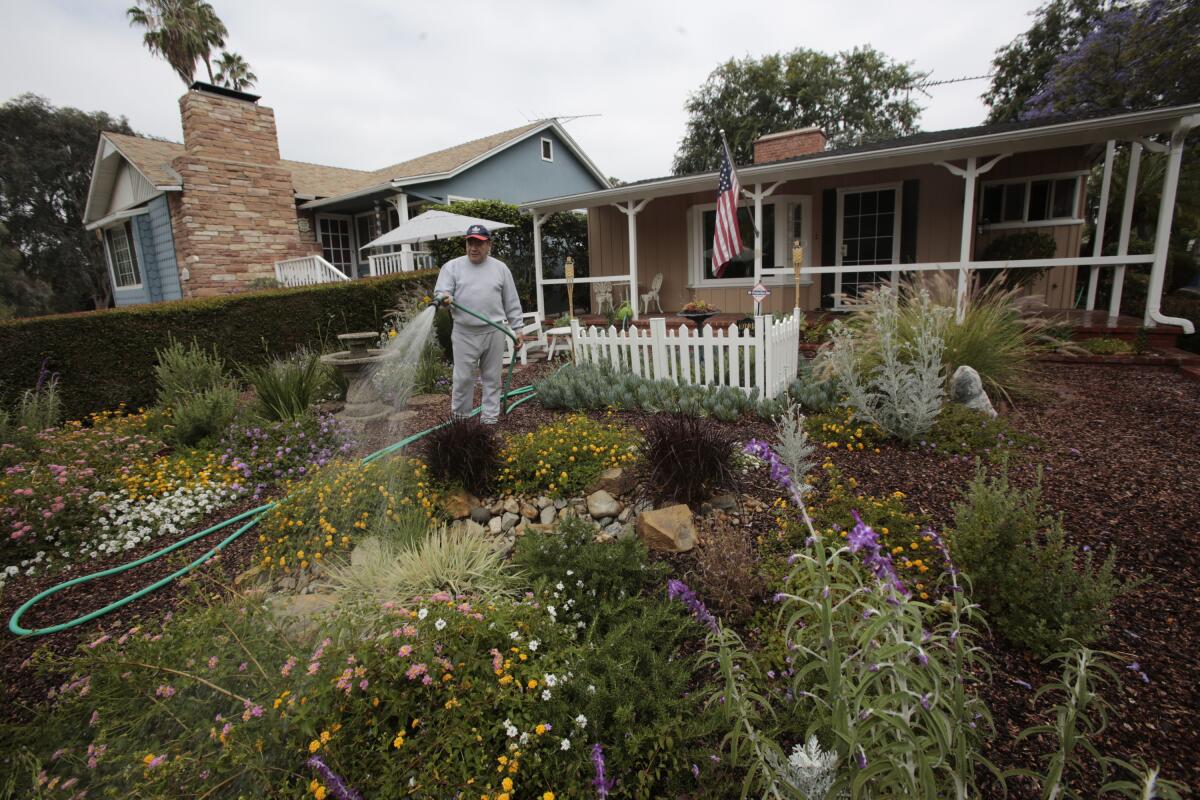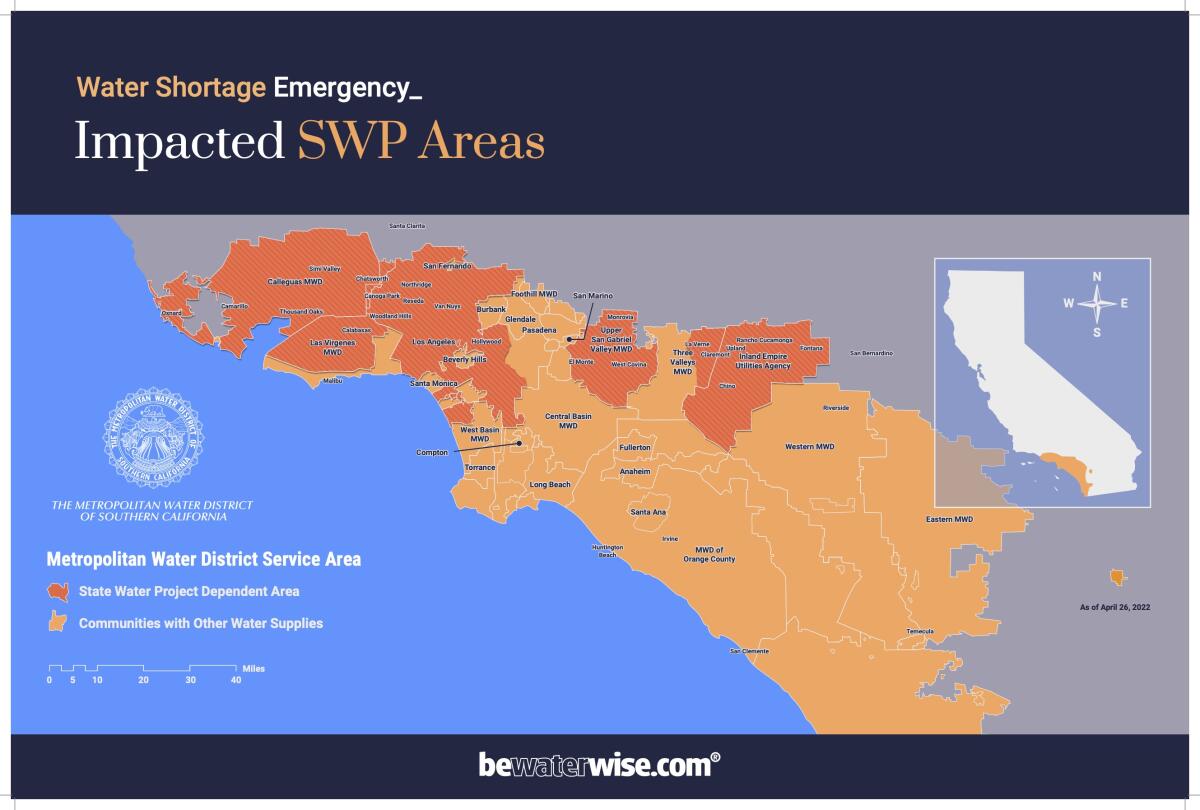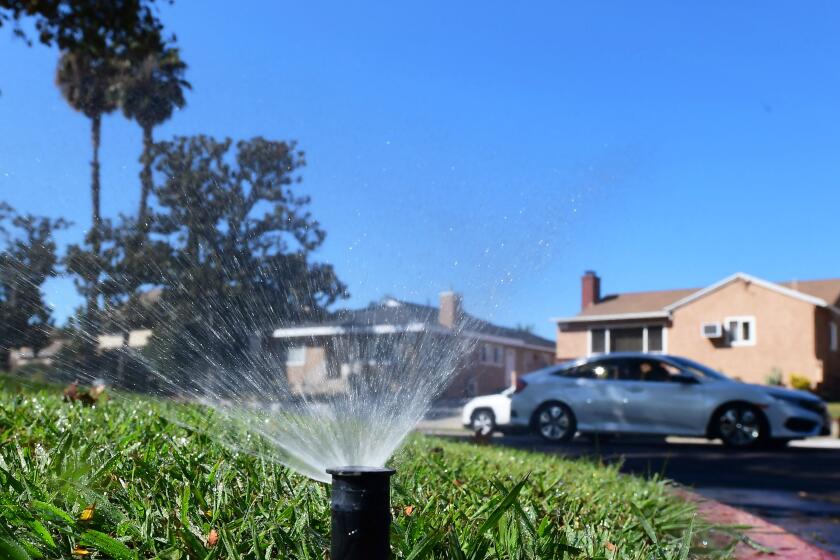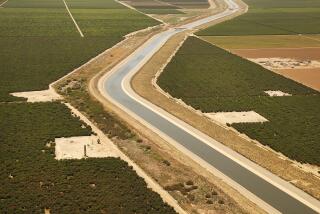Parts of SoCal face full outdoor watering ban by September if conditions don’t improve

- Share via
The Metropolitan Water District said Wednesday that the unprecedented decision to reduce outdoor watering to one day a week for about 6 million Southern Californians could be followed by even stricter actions in September if conditions don’t improve, including a total ban in some areas.
“If we don’t see cutbacks, or conditions do not get better, the Metropolitan board has given me the authority to ban all watering as soon as Sept. 1,” MWD general manager Adel Hagekhalil said Wednesday. “We know what this means to communities, we know what we are requiring here, but we’re facing a challenge. We do not have the supply to meet the normal demands that we have.”
The news came as residents of the Southland scrambled to unpack the latest restriction, which will take effect June 1 and apply to areas that depend on water from the State Water Project. The MWD’s board has never before taken such a step, but officials said it became an inevitability after California’s driest ever January, February and March left snowpacks shrunken and reservoirs drained.
The first three months of the year are typically the heart of the state’s wet season. As a result of the dry start to the year, state water officials in March slashed the project’s expected deliveries from an already low 15% to 5%.
“That was really when we said, wow, this is a condition that is different than anything we’ve ever seen and even contemplated,” MWD chief operating officer Deven Upadhyay said. “The drop from the 15% to the 5% really forced things.”
MWD officials said it would fall to their individual member agencies — including the largest agency, the Los Angeles Department of Water and Power — to determine how to implement the restrictions. Those who don’t will be slapped with a penalty of up to $2,000 per acre-foot of excess water used.
New Southern California drought rules limit outdoor watering to once a week in some areas. Here’s what you need to know.
They are hoping it will be enough, but acknowledged that after months of inaction marked by backsliding conservation efforts, almost nothing is off the table.
“We’ve done pretty much everything that we can to alleviate the immediate crisis, and now we need the public’s help,” Hagekhalil said.

In order to avoid a worst-case scenario come September, agencies and users will have to significantly step up their efforts to conserve and reduce water consumption by 35%, particularly during the hot, dry months of summer, he said.
The average person in Southern California uses about 125 gallons of water per day, but the number needs to be closer to 80 gallons per person per day to reach conservation goals.
“That is the tough reality we all face, so we have an option: Can we work together to stretch the water we have, to last us for the entire year, or have to take drastic actions in September?” Hagekhalil said.
Areas affected by the new order include northwestern Los Angeles and Ventura counties, parts of the San Gabriel Valley and parts of the Inland Empire. The MWD imports water from the State Water Project and the Colorado River, and serves 26 public water agencies across six counties that supply 19 million people, about half the state’s population.
“This is a crisis. This is unprecedented. We have never done anything like this before,” Hagekhalil said. “And because we haven’t seen this situation happen like this before, we don’t have enough water to meet normal demands for the 6 million people living in the State Water Project-dependent areas.”
California’s drought, now in its third year, has become the driest on record and has been intensified by hotter temperatures unleashed by climate change. With the state’s major reservoirs at low levels, the MWD has been left without enough water in parts of Southern California.
The district’s staff wrote that the measures are intended to conserve water supplies and “ensure that near-term human health and safety needs can be met.”









